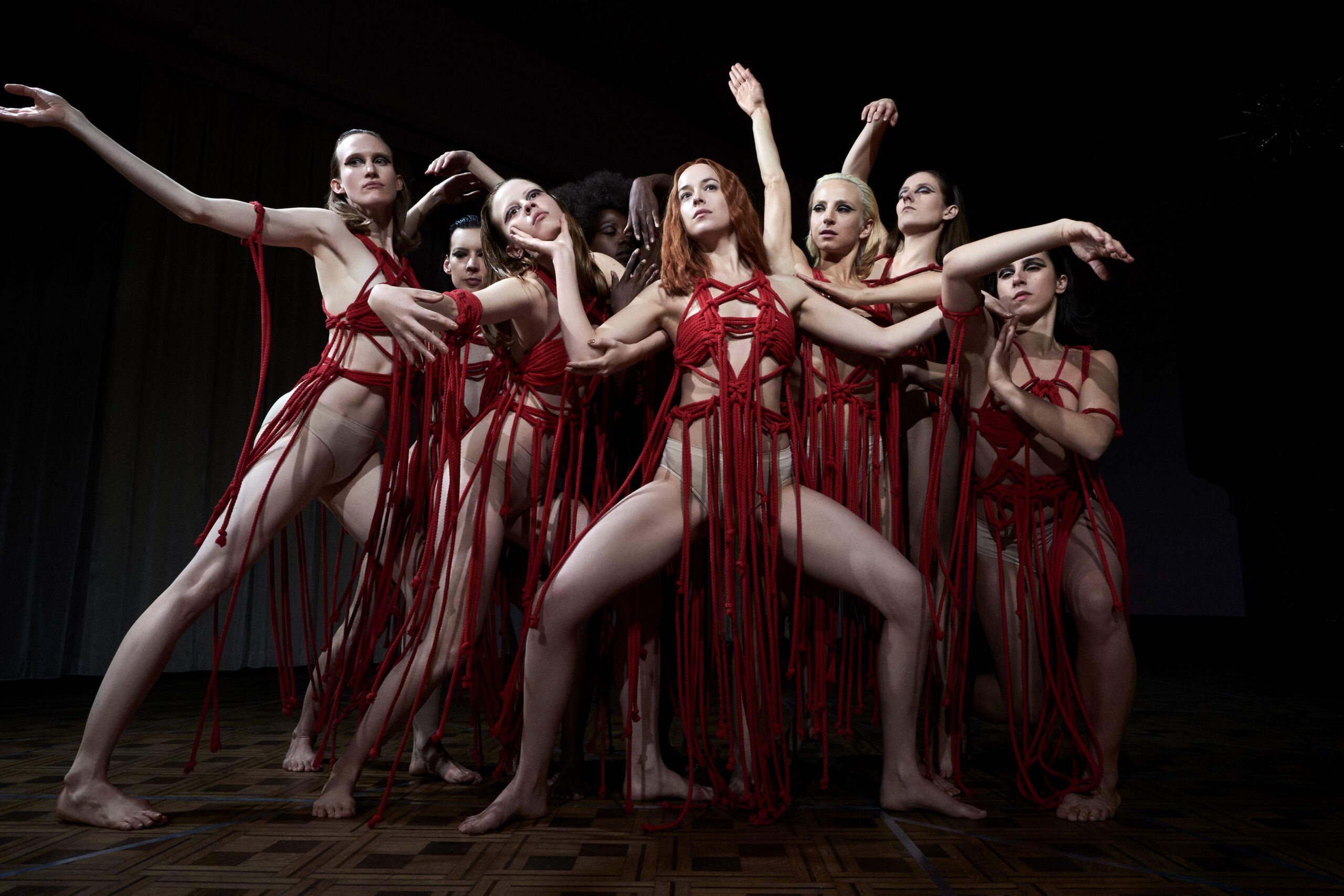Ambition gets the best of an off-day Luca Guadagnino in his revisionist Suspiria, a leaden reimagining of Dario Argento’s phantasmagoric 1977 shocker about a witches’ coven at a prestigious German dance academy and the American student who discovers its secret.
The story goes that youthful Guadagnino (I Am Love, Call Me by Your Name), the most evocative of movie sensualists, found early fascination (who didn’t?) in Argento’s ornate supernatural chiller and always dreamed of mounting his own version. Fair enough. But in doing so he has jettisoned everything novel about his inspiration, from its extravagant production design to its stylish set-pieces to its throbbing, surrealist score, not to mention its loopy fun.
No doubt these decisions were methodical, Guadagnino free to adapt to his heart’s desire. But why instill a bloated running time, blandly desaturated palette and a labored narrative triptych equal threads German history, feminist empowerment and dance theory?
Such imposed complexities—including a bizarrely overplayed suggestion that a missing student may have been recruited by radicals—are, I believe, intended to converge into some sort of progressive parable on the manifestation of long-suppressed feminine power into modern German culture and society (but don’t quote me on that). Instead they prove a fatal drag on the material, sinking our investment, and the movie, long before its final Grand Guignol bloodbath, set to the strains of Thom Yorke’s odd, new age score.
Add to this brew a vacuous Dakota Johnson (whose credit-where-due Fifty Shades of Grey physique is undeniable) in the role Jessica Harper (who makes a late appearance) originated, stunt casting of Guadagnino muse Tilda Swinton fooling no one as multiple characters and a decided absence of tension, and you’ve got an interminable 152 minutes struggling to justify its raison d’être.
Picture opens in 1977 West Berlin with panicked student Chloe Grace Moretz fleeing the Markos Dance Academy for the safety of her elderly psychiatrist’s office. That psychiatrist, Dr. Josef Klemperer (“Lutz Ebersdorf”, nee Swinton), becomes a central figure here, drawn into the school’s conspiratorial underworld while nursing his own tortured memories.
Enter Suzy Bannion (Johnson), an Ohio Mennonite (yes, seriously) and apparently prodigious modern dance talent whose audition—which to my eye didn’t impress and appeared to be aggressive flailing—somehow wows the school’s internationally famed leader and artistic director, Madame Blanc (Swinton, again), whom we’re told never sits in on auditions but naturally senses something in Bannion…what, exactly?
The picture’s opener, its scenes of the dancers slinking out expressive choreography beneath the suspicious eyes of Blanc and imperious headmistress Miss Tanner (Angela Winkler) have an undeniable slow-burn pull, but by the forty-five-minute mark it turns plodding.
It’s here that Guadagino stages one of the picture’s few thrills (from which an excerpt riled Cinemacon audiences earlier this year), a visceral contortionist nightmare of a body writhing in agony, bones splitting, twisting and protruding in sync with a dancer’s provocative gyrations in an adjacent rehearsal room. It’s fun, for a minute—and it goes on for several.
The screenplay dictates that Bannion become the star dancer in a revolutionary new show named Volk, which to put it mildly is expressionistic athleticism fused with heavy symbolism and some of the movie’s only flashes of color, otherwise shot largely in murky tones by Guadagnino favorite Sayombhu Mukdeeprom and edited into a frenzy of interlocking limbs by Walter Fasano, who deserves credit for making the absurd coherent.
Going on inside the school—deep inside—is a power play between Blanc and a centuries old crone named Mother Markos (Helena Markos in Argento folklore), one of three supreme witches whose supernatural power controls…the world? Blanc has her own plan to shift this axis and Bannion figures prominently in the gory denouement.
The picture is stacked with German history, weaving together buried Holocaust memories, the Berlin Wall (ever present directly outside the dance studio) and a focus on the Baader-Meinhof era, a convergence of tumult outside the academy while the hysteria roils from within. Guadagnino and screenwriter David Kajganich seem to ultimately be after a sort of feminist reclamation of power at the intersection of turbulent political past and present societal unease, and the role in such of the witches’ fated leadership–ancient Markos, usurped Blanc and doe-eyed Bannion, who may just be the vessel to bring the coven’s power into the modern world. Or something like that.
At this point into this endurance test viewers will either be halfway home or have sunken deeply into REM. Suspiria, in this version, is an overblown betrayal of its predecessor’s spirit and audience’s goodwill. It’s forgotten how to scare us. Some may argue that wasn’t Guadagnino’s intention.
It sure should have been.
2 stars.



